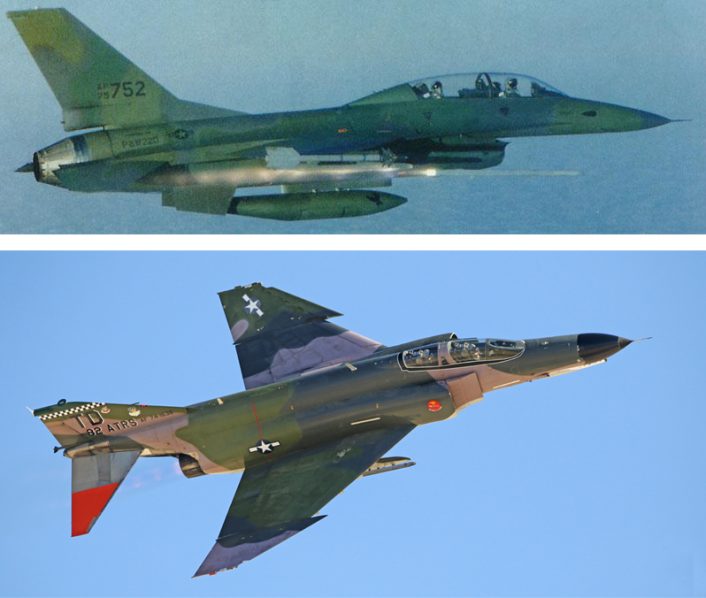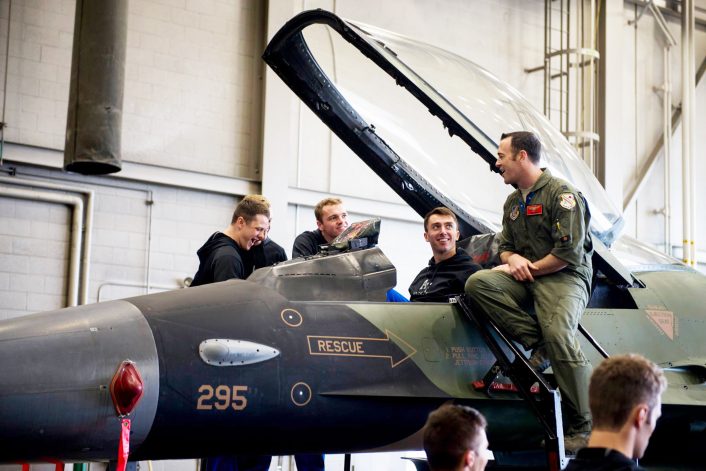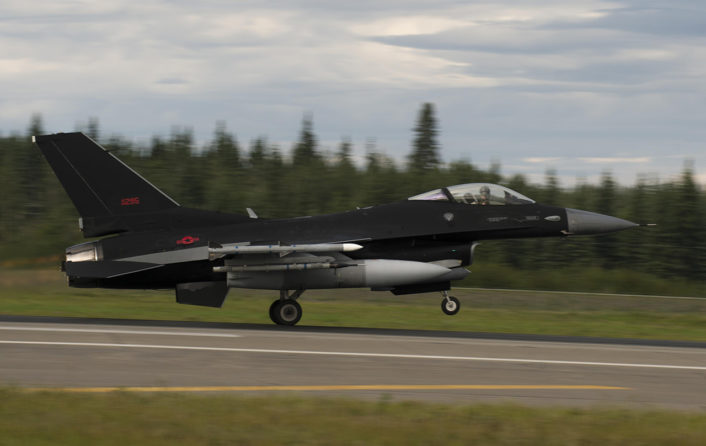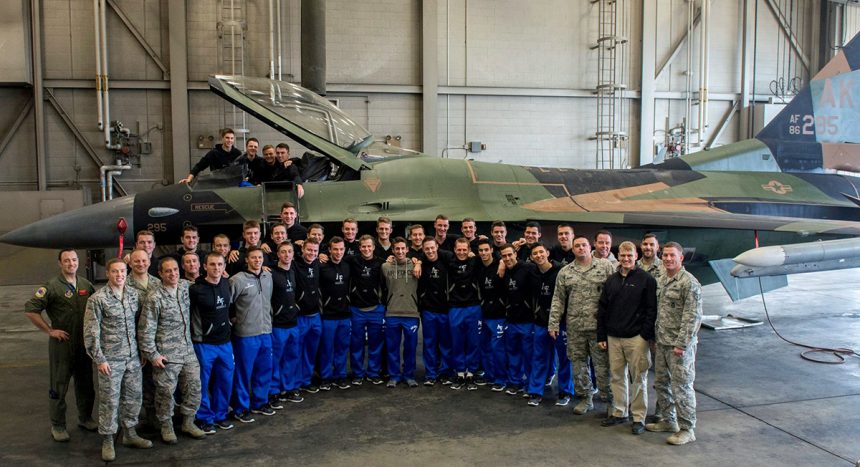F-16C Block 30 from 18th Aggressor Squadron Debuts in New Splinter-Euro/Southeast Asia Style Camo.
A photo shared on the Eielson Air Force Base official Facebook page early on Saturday, Oct. 7, 2017 showed a recently repainted F-16C Block 30 belonging to the 18th Aggressor Squadron with a new and unusual paint scheme.
The new paint scheme mimics colors seen in both the “European One” and older Southeast Asia camouflage schemes. There appear to be either four or three colors on the aircraft. Possibly either one or two shades of green, a tan shade and flat black. The aircraft is dubbed “BDU (Battle Dress Uniform) Splinter”, a type of camouflage used on combat trousers and jackets.

The pattern is interesting since it is not a rounded or feathered transition from color to color like the older Southeast Asia camouflage seen in the Vietnam era or the Cold War, but a splinter pattern seen on recent Russian aircraft. The Aggressors often mimic Russian adversaries in training with U.S. and other western aircraft.

Airman Eric M. Fisher of the 354th Fighter Wing Public Affairs Office wrote in August that, “Eielson houses more than 20 F-16s. These aircraft are used by the 18th Aggressor Squadron to provide critical combat training to pilots around the globe. Due to their goal of threat replication, the 18th AGRS aircraft are painted to match that of possible enemy fighter aircraft.”
Airman Fisher went on to say the 18th AGRS has been flying opposing forces (OPFOR) simulation for over 20 years. It is worth noting that, as with this new F-16 paint scheme, the color schemes on the Eielson aggressors have changed as actual threat color schemes have changed in the real world.
The newly painted aircraft was shown in photos with the U.S. Air Force Academy Hockey Team as they visited Eielson Air Force Base near Fairbanks, Alaska to play the UAF Nanooks hockey team. Little was mentioned of the aircraft or its new paint scheme in the social media post.
The aircraft became famous thanks to a photo taken on Jul. 31, 2017 and showing the aircraft, serial 86-0295, assigned to the 18th Aggressor Squadron with a brand new overall black livery. Even though it initially seemed that the black livery might have been inspired by a Chinese aircraft (the Shenyang J-31 Falcon Eagle or “FC-31 fifth Generation Multi-Purpose Medium Fighter”, China’s second stealth fighter jet it was almost immediately explained that the F-16 was a half-finished paint scheme, rushed into service to take part in Red Flag Alaska.

Hopefully more photos of this new paint scheme surface soon and we will see aircraft profile artists like Ugo Crisponi, Mads Bangso and Ryan Dorling among others making color profile prints of this new Alaska Aggressor.
Thank you to Pierpaolo Maglio for providing additional details about the BDU Splinter.








